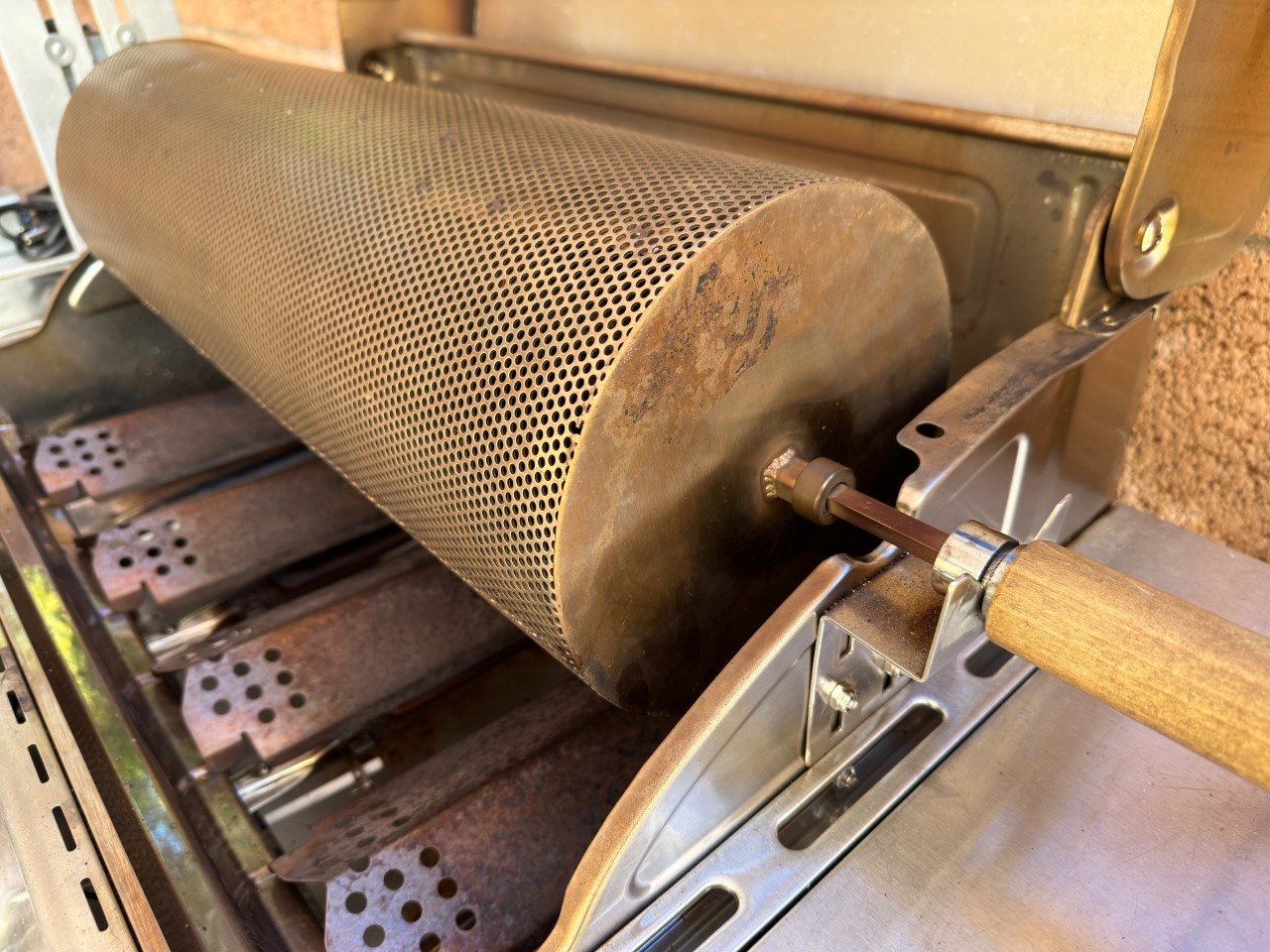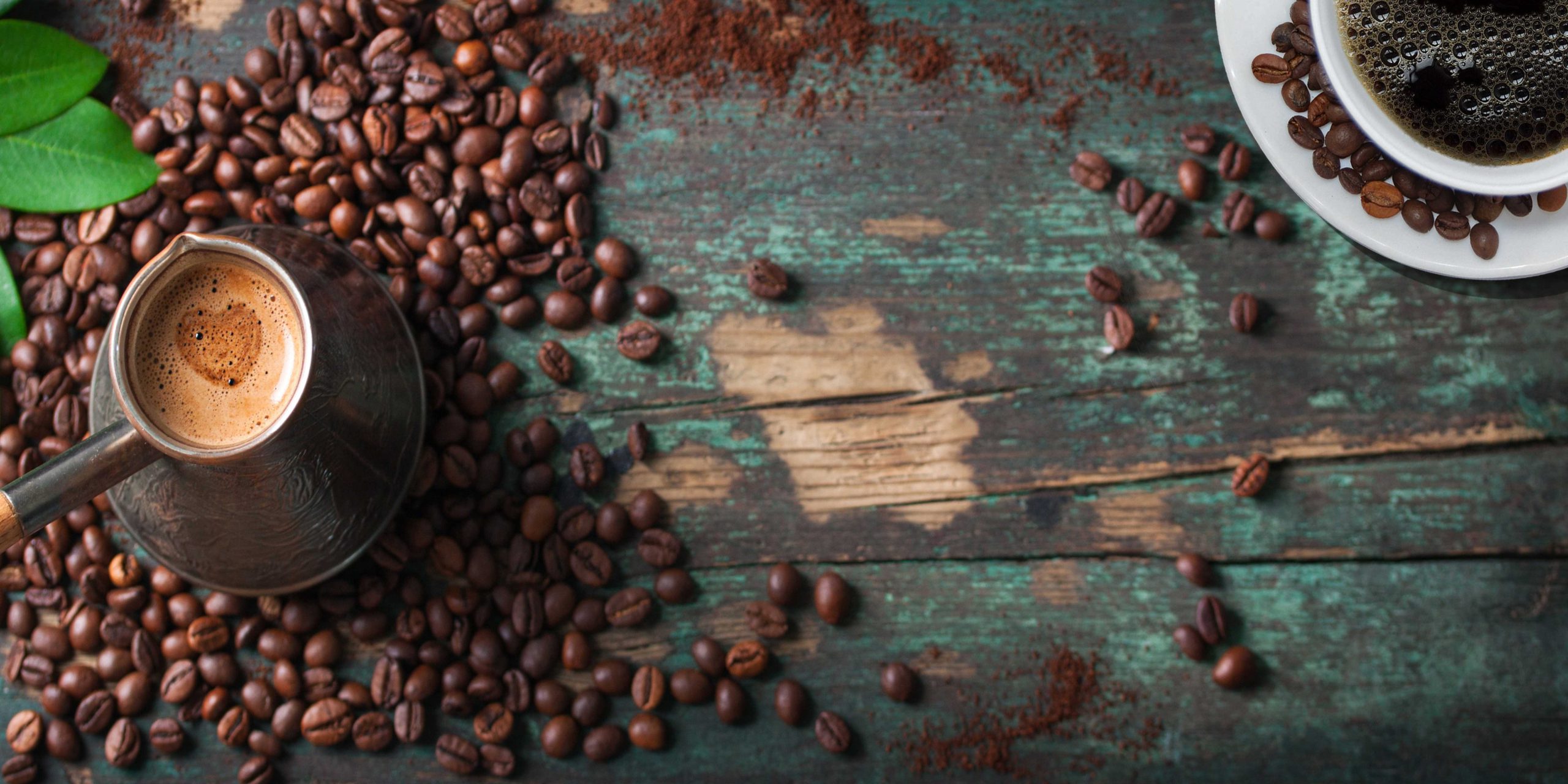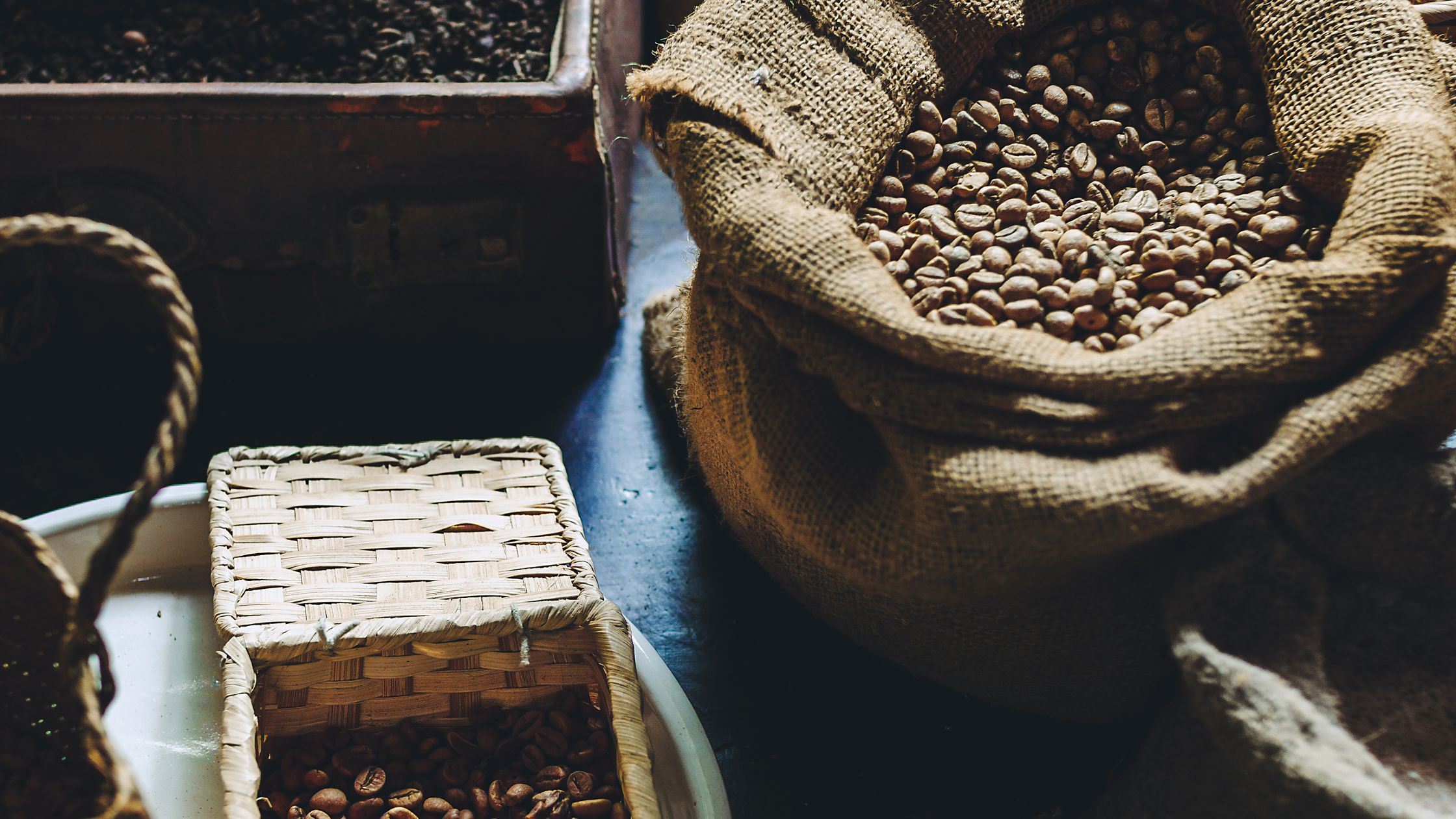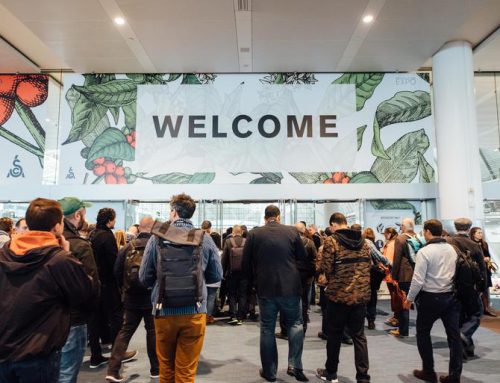How to Roast Coffee Beans
I started out in coffee in the mid-2010s as a barista at the only third wave cafe in my area. My first job roasting was a couple years later with Strange Brew Cafe + Roaster in Palos Hills, IL. We started a roasting program out of both necessity and curiosity. I learned as much as I possibly could about roasting through books and online resources, which were scarce at the time. The most important lesson I learned that the only way to truly learn and understand how to roast coffee is through experience – ie, trial and error. It helps to have a basic set of principles and a frame of reference, but these should only be the starting point. Do not be afraid to experiment because there’s no better way to learn!
If you’re just starting out as a coffee roaster or if you love coffee and you’re curious about how to get started roasting your own coffee beans, you’ve come to the right place. At Genuine Origin, every coffee comes packed in 65lb boxes. It’s a great size for most professional coffee roasters, but also gives home roasters a chance to jump into the game without investing a lot in inventory. Plus, the prices are generally much better than buying 1lb – 5lb quantities.
In this post we’ll cover how to get started roasting your own coffee beans and cover some of the questions roasters ask us all the time.
Scooping green coffee beans from GrainPro | Img AvatarKnowmad Getty Images
How to roast coffee beans at home?
Equipment: You can technically start roasting your own coffee with any source of heat and something to hold the beans, so your equipment can depend on either your budget or willingness to experiment. The roasting process causes smoke, so we recommend that whatever equipment you choose, you make sure that to use it in a well-ventilated area.

8lb RK Drum Roaster for a grill – SW Grilled Coffee
Do I need a professional roaster?
Nope! I started out on a Behmor in a garage that I got secondhand on Craigslist. If it’s for coffee roasting at home or as a hobby, feel free to throw some green coffee beans into a cast iron pan on your stovetop. If you want a new coffee roasting machine, there are plenty of affordable home coffee roasters like Gene Café or Hottop.
A word about consistency in coffee roasting
I’m a believer in the scientific method, so it’s best to not tweak too many variables at once. Figure out your batch size, charge temperature, target roast time, and target end temperature. Depending on the result, change one variable at a time. Try to create a repeatable coffee roasting process.
A word about the work – roasting coffee beans takes patience and practice. Keep in mind that you’re trying to get a desired end result with a process that takes place within a short window of time. On top of this, you will likely have to wait 24 hours to try what you roasted, depending on your cupping preferences, or how long you’d like to let the coffee rest. Many of your roasts may not turn out exactly how you like, but that’s just part of the process. Trust your senses and adjust your practices based on your experiences.

Fresh roasted coffee – Adelina Zw/Pixabay
How to roast coffee beans?
To start, I’d like to quote @roasterkat from Black & White Coffee Roasters (You should follow her on instagram and read her blog). When giving roast information and data, she always gives the disclaimer, “this post is descriptive, not prescriptive.” Remember, every roaster and every coffee will produce different results. Even the same coffee beans and the same coffee roasting machine at a different altitude will produce different results. The point is, you should learn about your machine and how it performs with different coffees.
How to roast your coffee depends on your preferences. Both Rob Hoos and Scott Rao have books available with guidelines to help with your desired outcome. Generally speaking, shorter roasts can get you “lighter” coffee, and longer roasts can get “darker” coffee, but there’s a ton of variables in between and the difference is massive. Personally, I always gravitated towards this school of thought:
-Figure out the optimal batch size for the machine you’re using
-Decide what charge temperature you’d like to start with (the energy from charge helps carry the roast from start to end, it is your starting energy)
-Start with the gas on a higher setting and gradually step it down until the end of the roast (this is called a temperature gradient and important for inner bean development)
-Have a target end temperature in mind based on your preferences
If you’re wondering how long you should roast coffee beans, I would first recommend common sense. Roasting too long (eg – hellishly dark roast) could have some unintended consequences like fires or charbroiled coffee. Roasting too little may give you an under-roasted, grassy cup. We don’t recommend putting straight up green coffee in grinders for a reason. It’s generally too dense and will wreak havoc on your grinder blade.

Arabica and robusta coffee beans by Igor Ushakov | Getty Images
What are the best green coffee beans for home roasting?
Coffee is a very personal thing, so the best coffee to roast at home is what your budget allows, or whatever you like to drink personally!
Buying Green Coffee Beans
Buying green coffee beans from Genuine Origin is as easy as it gets, but, then again, I’m on the site all the time. So, let’s unpack what you see when you look at a Genuine Origin coffee. Most of the information – other than the coffee bio and producer information – comes from our Quality Control lab. That’s where we taste coffees from origin and approve them before they get to our site. We have a team of expert cuppers who adhere to the roasting and cupping guidelines outlined by the Specialty Coffee Association.
Here’s what you can expect to see when you shop for a GO coffee:
- Flavors: Coffee is estimated at this point to produce over 900 aromatic volatile compounds. Coffee can pretty much taste like anything. Which notes do you gravitate towards – chocolatey and sweet, wild and fruity, or something in between? The more coffees you try, the more you’ll know about flavors. All of our coffees list the tasting notes that our Quality Control team called out in their evaluation. You can also try before you buy. Order samples of the coffees and see/taste them for yourself before investing in a 65lb box.
- Acidity: Generally speaking, if you roast hot and fast then the coffee will maintain higher levels of acidity. Longer roasts tend to smooth out some of the acids present in coffee. The acidity present in any given coffee also has to do with region, elevation, terroir, processing, and many other factors.
- Body: texture and weight of the coffee, is it thick or delicate?
- Moisture: important to know when roasting. You’re basically trying to zap the moisture out of the coffee during the roasting process, so coffees with different moisture levels will require different roasting approaches. Higher moisture coffees require more heat, while lower moisture coffees may require a gentler approach.
- Cup Score: We list all of our coffees with a score following the SCAA regulations. Typically, most specialty coffee will fall in the 80-90 point range. This system is largely used in order to have some sort of universal language in regards to coffee quality when cupping and buying green coffee. We tend to list the PSS (pre-shipment sample) scores, which mean the sample was sent from origin before the entire lot of coffee was shipped to the Genuine Origin warehouse.
- Process: There’s a seemingly infinite number of processes right now, but the three most widely used options are washed, honey, and natural. They all have different properties when roasting.
- Elevation: The elevation at which the coffee is grown can have implications for the density of the bean. I want to avoid generalizations, but typically coffee grown at higher elevations tends to be of greater quality (flavors, aromatics, etc.). The other side of elevation is the altitude where a roaster is located geographically. Your elevation when roasting can have an impact on the properties of your roasting strategies – check out this article from Cropster for more on the subject.
- How to look for Quality: We recommend sampling coffees before buying. It’s the best way to ensure what you get is what you are expecting. Quality is often determined by a buyer’s preferences, but when we talk about quality in green coffee, it will be in terms of cup score and grading by the country of origin’s definitions. You will see terms such as SHB (strictly hard bean), EP (European preparation), grade, and screen size.
- Price per pound: Sometimes price per pound can be an indicator of quality, but more often it’s simply a function of the supply chain. The c-market is always fluctuating along with environmental, socioeconomic, and political factors. As a seasonal crop, the price of coffee will always be dynamic. Do your best to plan, budget, and choose which coffees will best serve you and your customers.
- Can I just ask which coffees I should buy? Sure! That’s why our customer service team is here. Use Genuine Origin’s Live Chat feature or send us an email.

Coffee Roasting Machine in coffee roastery – IsaEva | Getty Images
How do I score a job as a coffee roaster?
It’s hard to say how to become a coffee roaster as a profession. There often isn’t a very linear path. My advice would be to keep learning if it is something that you’re passionate about. Start roasting at home, then move up incrementally. Maybe a local roaster will give you a tour or demonstration. It never hurts to ask. Most coffee professionals are eager to share information with coffee enthusiasts. Along with this, here are some ideas.
- check out Sprudge, Daily Coffee News, etc. for their job listings, as well as the websites of your local roasters or companies
- Take a look online if there’s coffee training programs in your area, or check the SCAA website for their programs and campuses worldwide
- have a look at YouTube: I used to watch Mill City’s Roasting School when I was first starting out
- network with coffee people – find local events or talk to baristas and coffee roasters
- Read the blogs of roasters you like or see if you can find books on coffee roasting
In conclusion, coffee roasting takes work. It’s not easy to become a great coffee roaster and get consistent roasts all the time, but it’s not unattainable. Coffee roasting can be a career, a hobby, or a business, but it’s always an adventure. Coffee is romantic; you get to travel the world and go to distant far-off lands through the coffees you roast. When you serve it up to your friends, family, and – hopefully – your customers, you can tell the stories of the people who cultivated the coffee and how you worked on perfecting the nuanced cup profile through your roast.
Keep on coffee roasting, keep on experimenting and keep on loving coffee!






